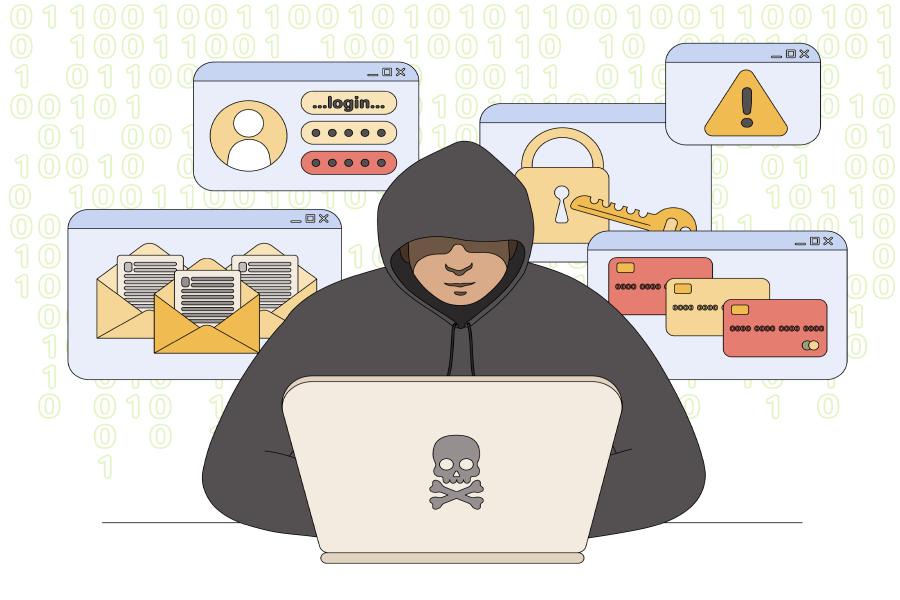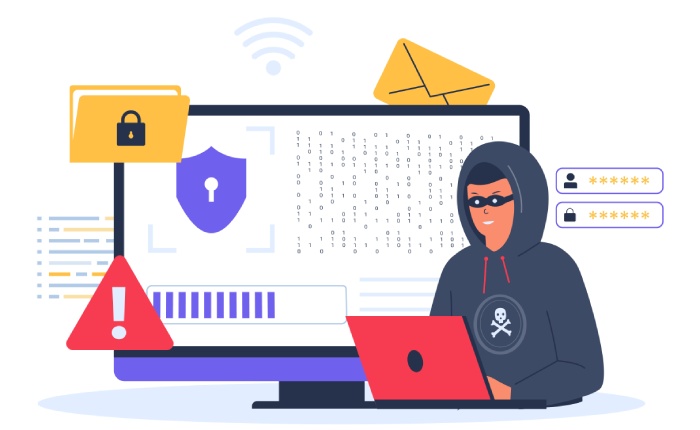Email security threats are increasing day by the day as more organizations use the online route for business and communications. Avoiding email security threats is of paramount importance and forms an integral part of every cybersecurity strategy employed by organizations worldwide.
Alarming Statistics To Know
With cybersecurity standards improving by the day, malicious actors have also intensified their efforts. Consequently, they employ innovative methods to access network systems and cause data breaches. Emails are the most prominent communication channel today. Hence, a significant majority of cybercrime involves email threats. Here are some compelling statistics to drive home the fact.
- Phishing, the most common type of cybercrime, has almost doubled in 2020 compared to 2019. FBI reports 241,342 phishing incidents in 2020 compared to 114,702 in 2019.
- Of all cybercrime incidents, phishing is the one most likely to cause data breaches. Though it has come down 6.6% over the previous year, the threat is omnipresent.
- 75% of organizations globally experienced some phishing incident in 2020. While 65% faced BEC (Business Email Compromise) attacks, 35% have experienced spear phishing.
Prevalent Email Security Threats
Here are the different types of email security threats that organizations experience on an ongoing basis.
- Phishing – The Most Significant Threat Of All: Phishing is a cyberattack wherein criminals send malicious emails to trick users into clicking on spurious links or downloading attachments, tempting them to fall for a scam. The victim ends up sharing confidential data and sensitive financial information.
- Spear Phishing – A Highly Targeted Phishing Variant: While phishing is a blanketed attack on multiple users, spear phishing is a targeted phishing variant. In this mode, cyber attackers send personalized fraudulent emails that appear to originate from a trusted sender to select individuals to obtain critical information. As it is a targeted version, spear phishing is more successful than traditional phishing.
- Business Email Compromise – The Trend Today: BEC is an advanced version of spear-phishing wherein the malicious actor obtains access to a corporate email account and sends malicious emails under the guise of the account owner to steal money from the organization.
- Ransomware – Increasing By The Day: Ransomware is a unique malware designed to block access to a network system so that its regular users will not be able to access data. Generally, phishing is the primary mode of delivering ransomware. Ransomware encrypts the target’s files until they pay the ransom demanded by the attacker. Ransomware protection is a crucial aspect of email security today.
Other threats like malware, computer viruses, zero-day attacks, and unsolicited email spam also use emails as the prime communication channel. Hence, email security assumes tremendous significance and forms an essential aspect of every cybersecurity strategy.
How To Deal With Email Security Threats?
Email threats can disrupt businesses leading to loss of confidential information and business reputation. The consequences of an email security breach are catastrophic. Organizations need to invest in robust cybersecurity strategies as listed below to deal with email security threats effectively.
Implementation Of A Secure Email Gateway
A secure email gateway prevents the transmission of malicious emails used to send malware or transfer critical information. An outbound SMTP is essential to check outgoing emails that violate the organization’s policies and share crucial data with the malicious actors.
Having a secure email gateway also helps in filtering incoming emails and identifying those with questionable credentials. It also helps in flagging such emails and prevents the employees from accessing them.
A secure email gateway ably assisted by automated email encryption identifies outgoing messages containing sensitive information. As it encrypts such communication, it ensures that malicious actors cannot access their content even if they manage to intercept them.
Investing In A Robust Anti-Virus Software Solution
It is a standard solution seeking to reduce the threat of email security breaches on a network system. It is better to invest in an anti-virus software solution that can provide the best anti-phishing protection. Though an anti-virus solution alone does not provide complete protection, it can help identify potential threats that could damage network systems. Accordingly, the user can take appropriate action to manage the issues.
Implementing Secure Email Archiving
Organizations need to maintain email records for several years for auditing and legal purposes. It is also an essential part of regulatory compliance. One can have a secure email archiving solution to store emails automatically. A malicious actor with stolen credentials can put an entire organization at risk. Hence, they should look for email archiving solutions that use supplementary security measures like user authentication, encryption, role-based permissions, and other relevant features to help reduce email threats.
Scrutinizing Email Attachments Thoroughly
Email attachments offer a shortcut route for malicious actors to access network systems. Therefore, scanning and scrutinizing every attachment before opening should form an essential aspect of email security. One should note that phishing attacks can look convincing as such emails appear to originate from reliable sources.
The file extension can give a clue to some extent whether the email attachment is safe or not. Typically, extensions such as GIF, JPG/JPEG, MPG/MPEG, TIF, etc., are found safe. Files having extensions like DOC, EXE, TXT, and XLS are usually risky and less likely to be secure. A reliable email security solution can scan such attachments and alert users accordingly.
Strong Passwords And MFA Can Help Email Security
Employee education is critical for email security, and organizations should take it seriously. Employees should know how to use robust passwords instead of the commonly used ones. Employing multi-factor authentication is also critical as it requires anyone to provide multiple pieces of evidence to prove their identity when entering their login credentials.
Similarly, updating the operating system, web browsers, and mail client regularly helps the cybersecurity strategy and stay ahead of malicious actors.
Final Words
Emails constitute a significant security threat because they are the primary communication channels in today’s environment. Malicious actors use emails to push their destructive content and target unsuspecting users. Therefore, email security is a critical aspect of any cybersecurity strategy employed by organizations globally.


